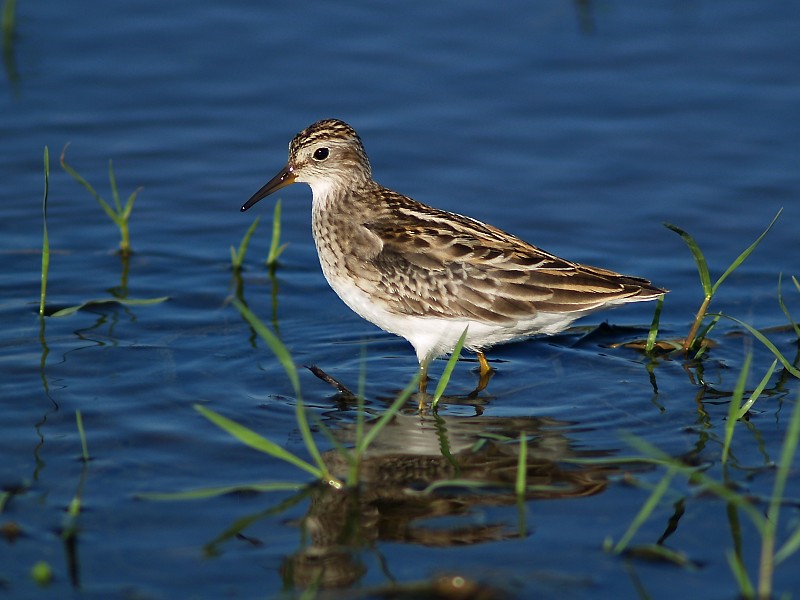- Long-toed Stint
Taxobox
name = Long-toed Stint

status = LC | status_system = IUCN3.1
status_ref = [IUCN2006|assessors=BirdLife International |year=2004|id=49080|title=Calidris subminuta|downloaded=9 May 2006 Database entry includes justification for why this species is of least concern]
regnum =Animal ia
phylum = Chordata
classis = Aves
ordo =Charadriiformes
familia =Scolopacidae
genus = "Calidris "
species = "C. subminuta"
binomial = "Calidris subminuta"
binomial_authority = Middendorff,1853
subdivision_ranks = Synonyms
subdivision ="Erolia subminuta"The Long-toed Stint, "Calidris" or "Erolia subminuta", is a smallwader bird. It breeds across northernAsia and is strongly migratory, wintering in south and south east Asia andAustralasia . It occurs in westernEurope only as a very rare vagrant.Little is known of the breeding habits of this species, although it nests on the ground, and the male has a display flight.
This bird has yellowish legs and a short thin dark bill. Breeding adults are a rich brown with darker feather centres above and white underneath. They have a light line above the eye and a brown crown. In winter, Long-toed Stints are grey above. The juveniles are brightly patterned above with rufous colouration and white mantle stripes.
This bird can be difficult to distinguish from other similar tiny waders which are known collectively as "peeps" or "
stint s". In particular, Long-toed Stint is very similar to itsNorth America n counterpart, theLeast Sandpiper . It differs from that species in its more slender, longer-necked appearance, longer toes, somewhat brighter colours, and weaker wingbar.These birds forage on mudflats, picking up food by sight, sometimes by probing. They mainly eat small crustaceans, insects and snails.
References
* Hayman, Peter; Marchant, John & Prater, Tony (1986): "Shorebirds: an identification guide to the waders of the world". Houghton Mifflin, Boston. ISBN 0-395-60237-8
Further reading
Identification
* Jonsson, Lars &
Peter J. Grant (1984) Identification of stints and peeps "British Birds" 77(7):293-315
* Alström, Per & Urban Olsson (1989) The identification of juvenile Red-necked and Long-toed Stints "British Birds" 82(8):360-372
* Round, Philip D. (1996) Long-toed Stint in Cornwall: the first record for the Western Palearctic "British Birds" 89(1):12-24External links
* [http://www.oiseaux.net/birds/photos/long-toed.stint.html Oiseaux] Photos
Wikimedia Foundation. 2010.
